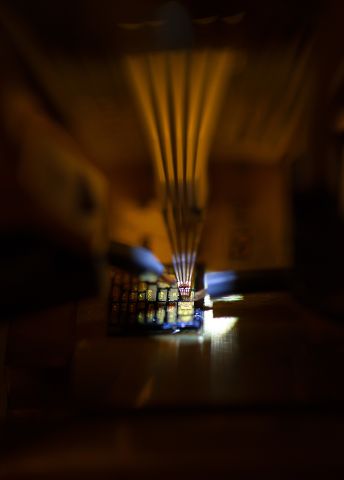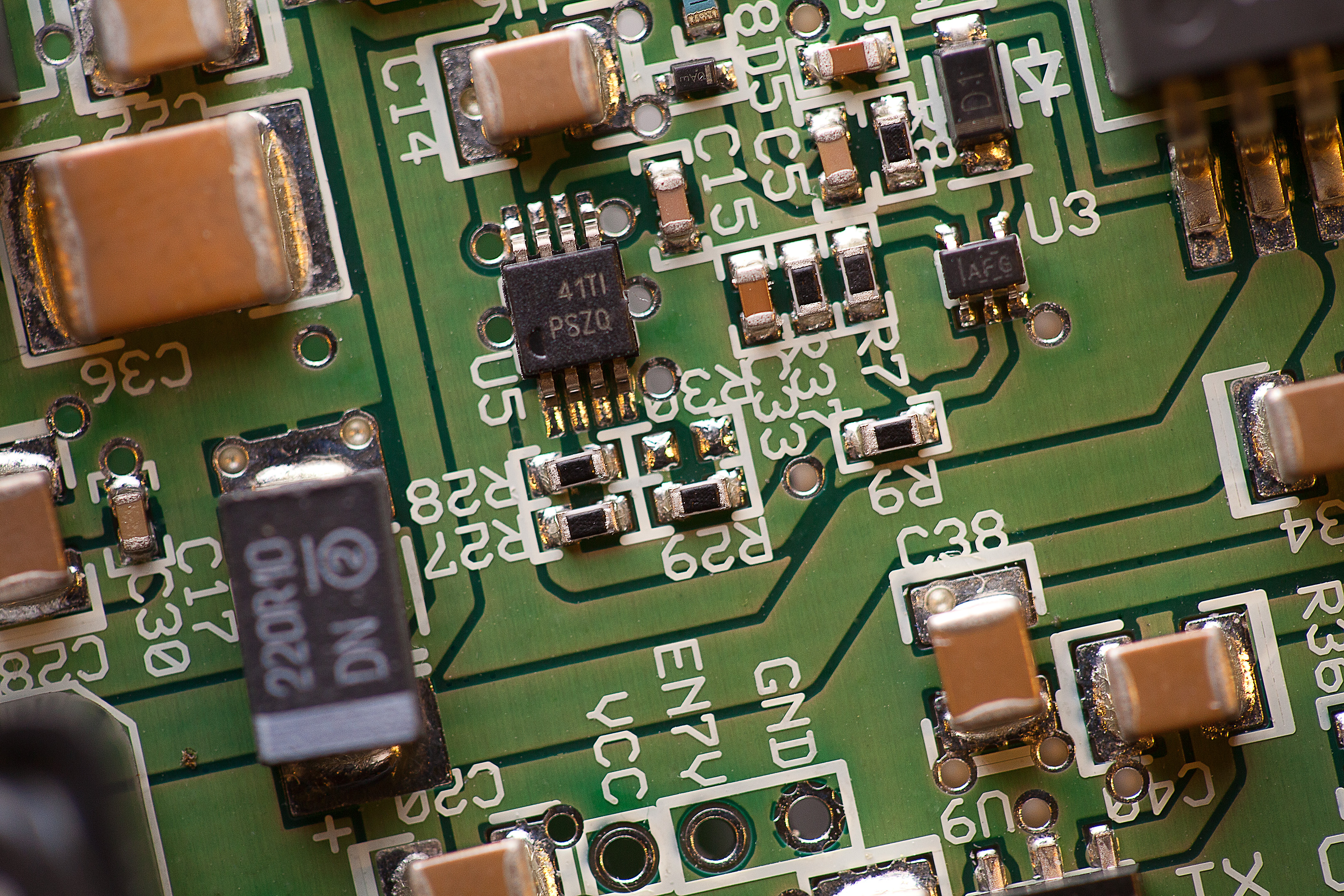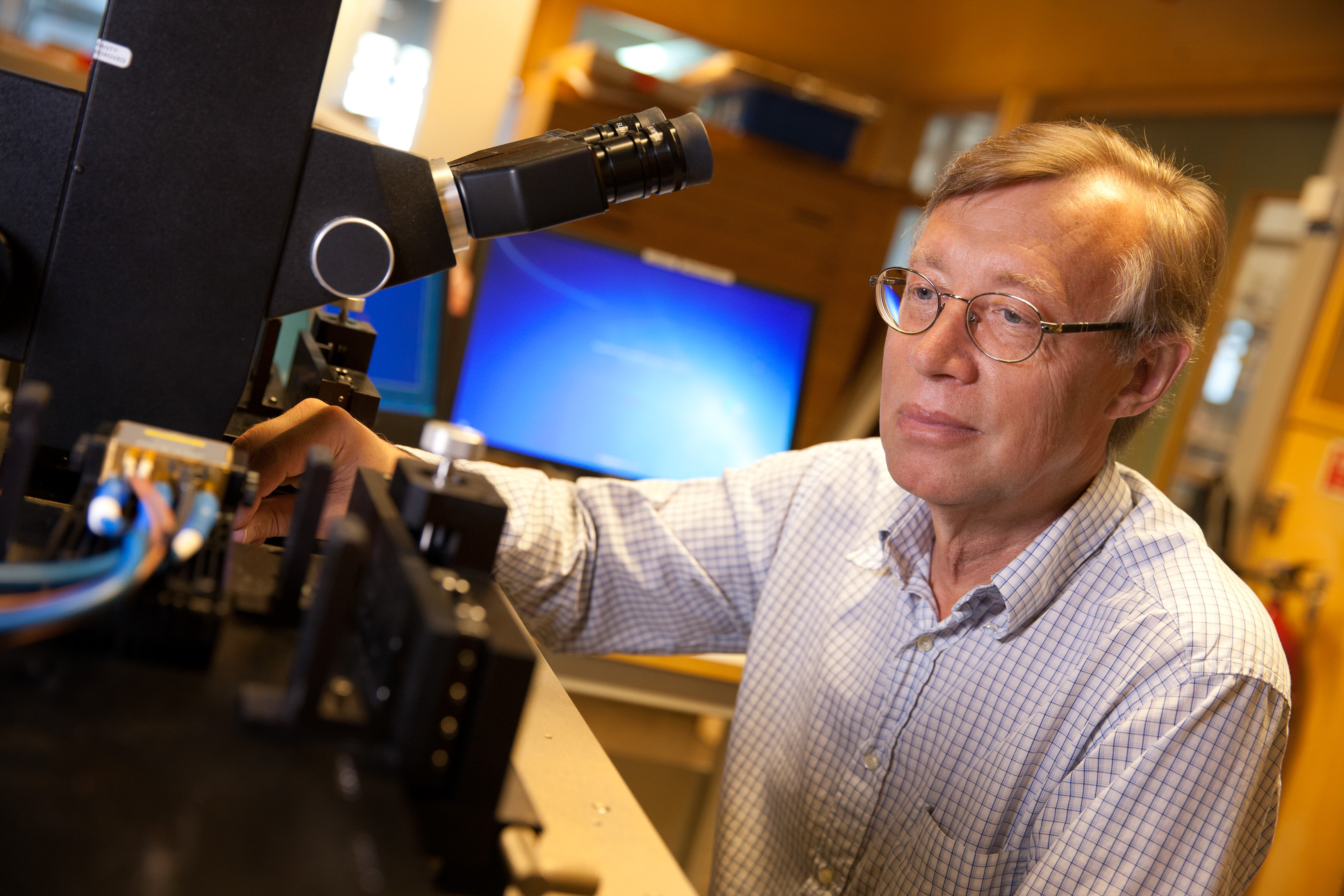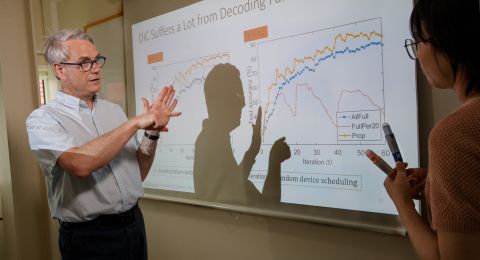
Project Grant 2013
Bridging the THz gap
Principal investigator:
Herbert Zirath, Professor of High-speed Electronics
Co-investigators:
Linköping University
Erik Janzén
KTH Royal Institute of Technology
Joachim Oberhammer
Institution:
Chalmers University of Technology
Grant in SEK:
SEK 35.6 million over five years
The laboratory for microwave electronics at Chalmers University of Technology feels like an office combined with a metalworking shop. Even if a large amount of the work here is theoretical, a great deal is physically built - cutting pliers, hammers and screwdrivers can be seen in the workshops side by side with expensive electronic equipment.
“Our field of science differs from that of many others in that we actually have to produce and test the things to be able to publish our results. We cooperate with Ericsson and Saab, to name a few, who further develop what we do, but from the beginning, we are the ones who make the components and the electronic circuits,” says Herbert Zirath.
He is a professor and the head of the laboratory, and his team, together with researchers from KTH Royal Institute of Technology and Linköping University, has been awarded a project grant by the Knut and Alice Wallenberg Foundation.
Transistors that handle higher frequencies
The goal is to create transistors that provide a sufficiently high power to make it possible to drive wireless data traffic in a frequency range that is currently almost unutilized, between 100 gigahertz and 1 terahertz. Complicated? Here is a brief introduction:
A transistor is an electronic component that functions as a controllable current source. By varying the control voltage over the transistor, the amount of current that should be supplied can be chosen. Transistors are used in all modern electronics, and their capacity accordingly plays a major role in how we can use almost all of our devices.
Hertz is the unit for frequency, where a hertz means one oscillation per second. Almost all electronic wireless communication - mobile telephony, streamed TV and radio, cloud services and so on - takes place at frequencies below 100 gigahertz. Every year, data traffic in the mobile network doubles - and in 2022, the amount of wireless data is estimated to be a thousand times greater than in 2012. It is already beginning to get crowded in this frequency range. We need more space, and we want it to go increasingly faster. Then, more bandwidth is needed, which means higher frequencies.
“The customers want to have higher data speeds. We might want to download a film wirelessly to a tablet, and it should preferably only take a second or at least not take an hour. If it takes a second, the energy consumption will also be less,” says Herbert Zirath.

New semiconductor is a challenge
Transistors are based on semiconductor materials, currently most often silicon. But with silicon, a sufficiently high power cannot be achieved to reach the desired frequencies. New materials are required. Nonetheless, research on semiconductors has decreased in the past decade, according to Herbert Zirath. This is why the project focuses on exactly that.
“We are looking for materials where the electrons can move quickly. In indium nitride, one of the materials we are studying, they might move five times faster than in silicon. This is a very large difference,” says Herbert Zirath.
But it is difficult to produce indium nitride. Semiconducting materials are created by allowing them to grow on their own on a suitable based called a substrate. This often takes place in a gas-filled environment in the same way that ice forms on a car windshield in cold and humid weather. However, it is easy for the material to be contaminated by other particles.
“It is a challenge to get the material to grow in a controlled manner. So far, only one group in the world has succeeded in making a transistor based on indium nitride, and it was not particularly good,” says Herbert Zirath.
He describes succeeding with pure indium nitride as the greatest challenge. But if it does not work, there are other promising alternatives. The goal is to produce a component with as high power as possible that is small and light at the same time. Herbert Zirath shows an image of a receiver with a capacity for 300 GHz. It weighs a few kilograms and costs about hundred thousand SEK. It is somewhat difficult to fit into a mobile phone in other words.
“Our vision in this project is to make something similar that is instead the size of a sugar cube and can be produced at a cost of between SEK 10 and SEK 100,” says Herbert Zirath.

The results will be immediately usable
The work is interdisciplinary, and the three universities contribute various special knowledge. All of the pieces are necessary in order for the results to be really valuable, emphasizes Herbert Zirath: they will become complete functioning systems that can be used for communication or image processing.
“There is an enormous amount to do once components have been developed that can be used. It is very inspiring. One possible application is gas analysis, which is something I would like to start a project on. Another is short-range communication - such as between computers in a computer room, or when using wifi at home - where a larger frequency range would provide much faster data transmission,” says Herbert Zirath.
The Knut and Alice Wallenberg Foundation has financed equipment for the laboratory at Chalmers in several rounds, including the clean rooms where the semiconducting material is built.
“I dare say that we have one of the most well-equipped laboratories in the world thanks to this. But then, good equipment is not enough, you have to have enthusiastic staff with the right expertise. This is primarily what we will use the project funding for.”
Text Lisa Kirsebom
Translation Semantix
Photo Magnus Bergström
Facts: The Frequency Gap
The “terahertz gap” is what researchers call the frequency range between around 100 gigahertz and 1 terahertz. This lies right in between today’s electronics and optronics.
Small transistors in the electronics can handle frequencies up to around 100 GHz with high power.
If higher frequencies are desired, the equipment becomes large and unwieldy, or the power is too low.
In the frequency range above 1 THz, lasers and light-emitting diodes work - but if their wavelength is increased to end up in the “gap”, the power is insufficient.



